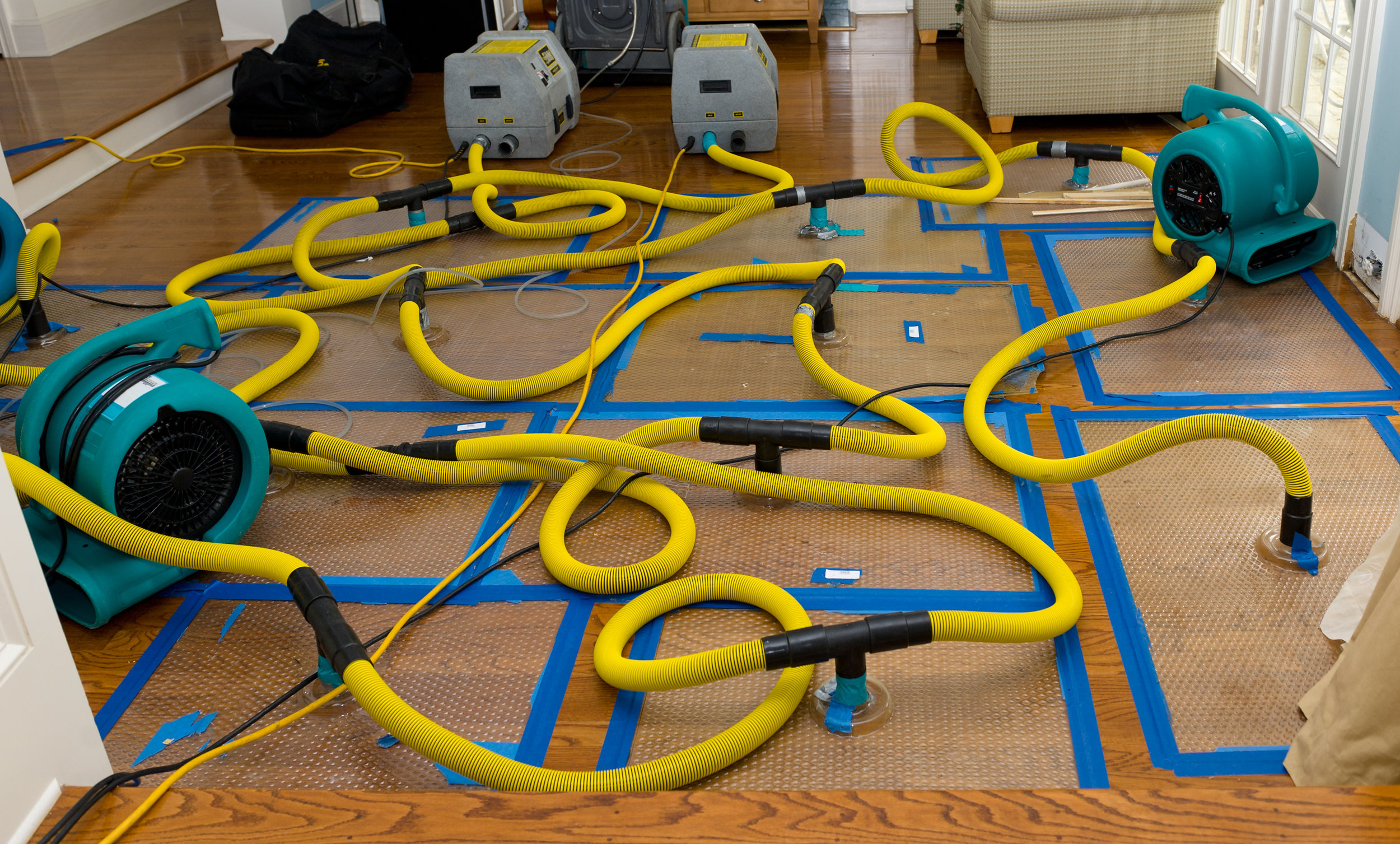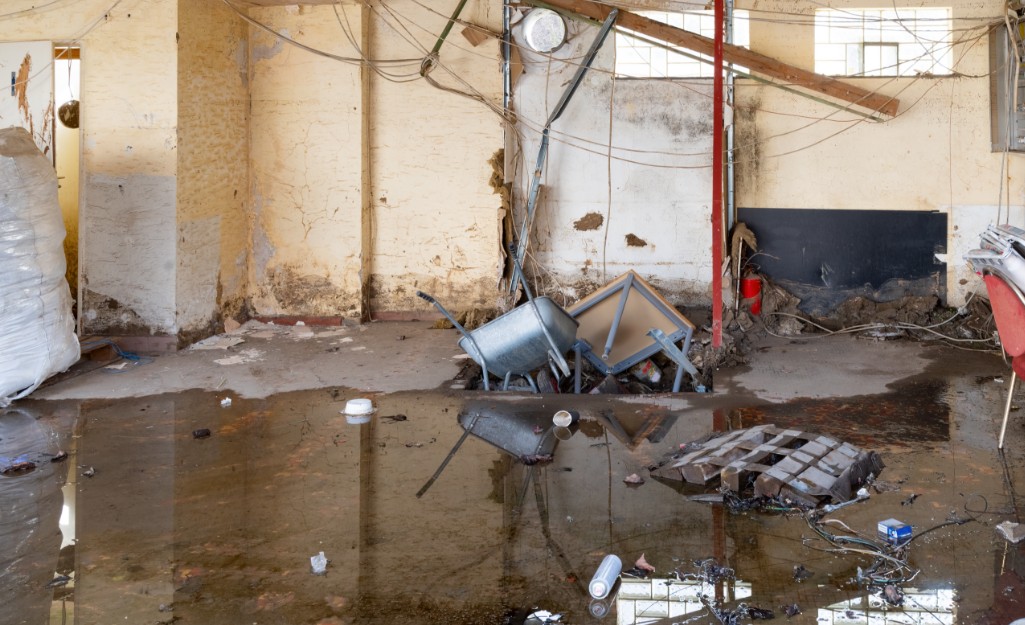Important Steps to Comply With for Reliable Water Damage Repair in Your Home
When confronted with water damage in your house, understanding the crucial steps for effective remediation can make all the difference. You require to examine the damages and assurance safety and security prior to dealing with the issue. Stopping the resource of water is important, but it's just the beginning. There's a collection of actions you should take to safeguard your residential or commercial property from additional concerns once you've handled that. Let's explore what you need to do next.
Evaluate the Damage
The very first action is to assess the damage thoroughly when you discover water damage in your home. Beginning by recognizing the resource of the water invasion. Look for leakages, burst pipes, or other issues creating the trouble. Next, examine the impacted locations for noticeable indications of damage, including mold and mildew, warping, or discoloration growth. Don't neglect to search in covert areas like behind walls or under flooring, as water can leak right into these locations unnoticed.Document the damage by taking clear photos and notes. This will certainly assist you when discussing the situation with your insurance coverage company or repair experts. Focus on the kind of products influenced, as various materials call for various remediation strategies. Ultimately, evaluate the extent of the damage. Is it minor or considerable? Understanding the scope will direct you in making a decision whether to manage it yourself or call in the experts for a much more extensive restoration procedure.

Ensure Security
Prior to you start any kind of reconstruction job, ensuring your security is vital. Initially, assess the problem of your home. If the water's deep or if you notice electric risks, do not get in the location. Switch off the power and gas supply to prevent accidents. Use safety gear like masks, handwear covers, and boots to protect yourself from impurities or mold.It's essential to remain familiar with your surroundings; watch for sharp objects and slippery surface areas. Treat it as unsafe waste if the water is from a sewage backup. Maintain youngsters and family pets away from impacted locations to avoid exposure.Once you have actually taken these preventative measures, you can wage the repair procedure. Keep in mind, your safety and security comes first, and if you're ever before unsure, it's finest to get in touch with a professional. Taking these steps will certainly assist assure you prepare to tackle the restoration securely and efficiently.
Stop the Resource of Water
After guaranteeing your security, the next action is to quit the source of water. Identify where the leakage is coming from. It can be a ruptured pipe, a malfunctioning device, or also hefty rainwater getting in through a damaged roofing. Turn off the main water supply to your home to protect against further flooding if it's a pipes problem. For home appliances, disconnect them and turn off their water system valves.If the resource is outdoors, like rainwater, attempt to divert it far from your home utilizing sandbags or various other barriers. For minor leakages, you may be able to utilize tape or a sealer briefly until an expert can repair it. Remember, resolving the source quickly is vital to lessening damages and protecting against mold and mildew development. When you've stopped the water, you'll be in a far better placement to carry on to the next actions in the restoration process.

Eliminate Excess Water
Act quickly to remove excess water, as standing water can cause extra comprehensive damages and mold and mildew growth. Gather your devices: a wet/dry vacuum, buckets, and towels. You can utilize towels to soak up the moisture if the water is shallow. For deeper water, a wet/dry vacuum cleaner is your best option. Make certain to empty the vacuum cleaner often to stay clear of overflow.If the water is infected, like from a sewer backup, wear safety gear, including masks and handwear covers, to keep on your own safe. Once you've removed as much water as possible, inspect for concealed pockets of dampness in edges and under furniture, as these can nurture mold.Don' t neglect to turn off electrical appliances and power outlets in wet locations to stop risks. This first action is crucial in decreasing damage and setting the stage for an effective repair procedure.
Dry and Dehumidify the Location
It's necessary to dry and evaporate the location completely as soon as you've eliminated the excess water. Start by utilizing dehumidifiers properly to draw wetness out of the air and protect against mold and mildew growth. Keep an eye on moisture levels to assure the area dries completely.
Eliminate Standing Water
To successfully deal with water damage, you require to focus on getting rid of standing water as rapidly as possible. Start by gathering needed devices, like a wet/dry vacuum cleaner or a pump, depending on the quantity of water. A vacuum should do the technique if the water is shallow. For larger amounts, a pump is extra efficient. While working, see to it to wear protective equipment to maintain on your own risk-free from pollutants. read more As you eliminate the water, take note of concealed locations like under furnishings or in corners where water might gather. Your area will begin to dry out once you've gotten rid of the majority. This action is essential, as lingering water can bring about mold growth and a lot more considerable damage.
Use Dehumidifiers Effectively
Exactly how can you efficiently utilize dehumidifiers to completely dry and evaporate your area? Beginning by positioning your dehumidifier in one of the most affected location, ideally where water damages is most serious. Ensure to shut all home windows and doors to develop a sealed environment. Turn on the dehumidifier and established it to the appropriate humidity level, usually around 30-50%. Empty the water collection storage tank frequently, or take into consideration utilizing a design with a continual drain alternative for ease. When possible, make use of followers to boost airflow, helping the dehumidifier job a lot more efficiently. Keep the dehumidifier running up until you're certain that the location is extensively dried, avoiding mold and mildew development and extra damage (Flood Damage Restoration). This step is essential for reliable water damage remediation
Monitor Humidity Degrees
Monitoring humidity levels is necessary throughout the drying procedure, as it assists ensure your space continues to be devoid of excess dampness. Buy a reputable hygrometer to track moisture precisely. Preferably, you wish to maintain levels in between 30% and 50%. If moisture analyses climb above this array, you may require to change your dehumidifiers or followers to boost air movement. Check the analyses frequently, specifically in locations susceptible to dampness, like basements or restrooms. Think about raising air flow or using additional dehumidifiers if you see consistent high humidity. Remaining on top of these levels not just quickens the drying out procedure but likewise protects against mold development, ensuring your home keeps risk-free and comfy.
Clean and Disinfect Affected Surfaces

Bring back and Repair Your Home
After cleaning and disinfecting the influenced locations, it's time to restore and repair your home. Begin by reviewing the damages. Look for structural issues, like weakened floorings or walls, and deal with any required repair work. Changing harmed drywall or floor covering is essential for both aesthetics and safety.If your furnishings or belongings were impacted, consider whether they can be recovered or need substitute. Tidy or expertly restore things where possible.Next, touch and repaint wall surfaces up any type of areas that need interest. This not just boosts appearance however likewise protects surfaces from future water damage.Don' t neglect to examine your pipes and home appliances for leaks, ensuring whatever's operating appropriately. Think about mounting a dehumidifier to stop future wetness issues. By taking these steps, you'll recover your home to its previous glory and produce a much safer living atmosphere.
Regularly Asked Concerns
How Much Time Does Water Damage Restoration Normally Take?
Water damage restoration normally takes anywhere from a few days to several weeks, depending upon the degree of the damages (Flood Damage Restoration). You'll intend to assess the scenario swiftly to lessen additional complications and assure appropriate restoration
Will My Insurance Cover Water Damages Restoration Expenses?
Your insurance coverage might cover water damages reconstruction prices, but it depends upon your plan. Check your insurance coverage details and call your insurance policy agent to clarify what's consisted of and what you need to sue.
Can I Manage Water Damages Repair Myself?
You can handle water damages remediation yourself, but it's vital to evaluate the scenario. If it's substantial, you could intend to call experts. Always prioritize security and guarantee you've got the right devices.
What Are the Signs of Hidden Water Damage?
You may see indications of hidden water damages like warped walls, mildewy odors, or discoloration. If your floorings really feel spongy or you area mold, it's time to investigate better before the situation aggravates.
Exactly How Can I Stop Future Water Damages in My Home?
To stop future water damage in your home, you ought to consistently examine plumbing, seal cracks, keep rain gutters, and guarantee appropriate drainage. Mounting a sump pump and moisture obstacles can additionally help keep your room dry. When you uncover water damage in your home, the first step is to examine the damage extensively. Act promptly to remove excess water, as standing water can lead to much more comprehensive damages and mold growth. To effectively tackle water damage, you need to focus on eliminating standing water as swiftly as possible. As you eliminate the water, pay focus to concealed areas like under furnishings or in corners where water may gather. Water damages repair typically takes anywhere from a couple of days to several weeks, depending on the extent of the damage.